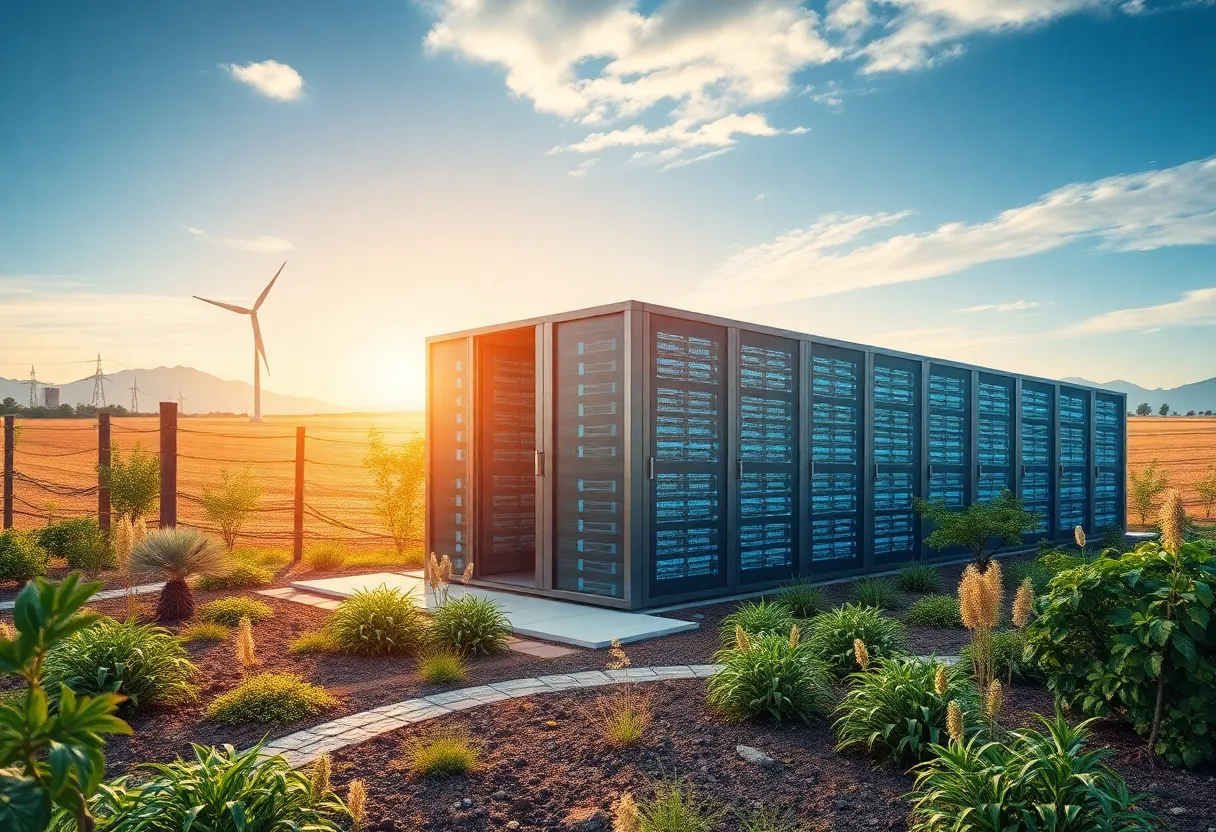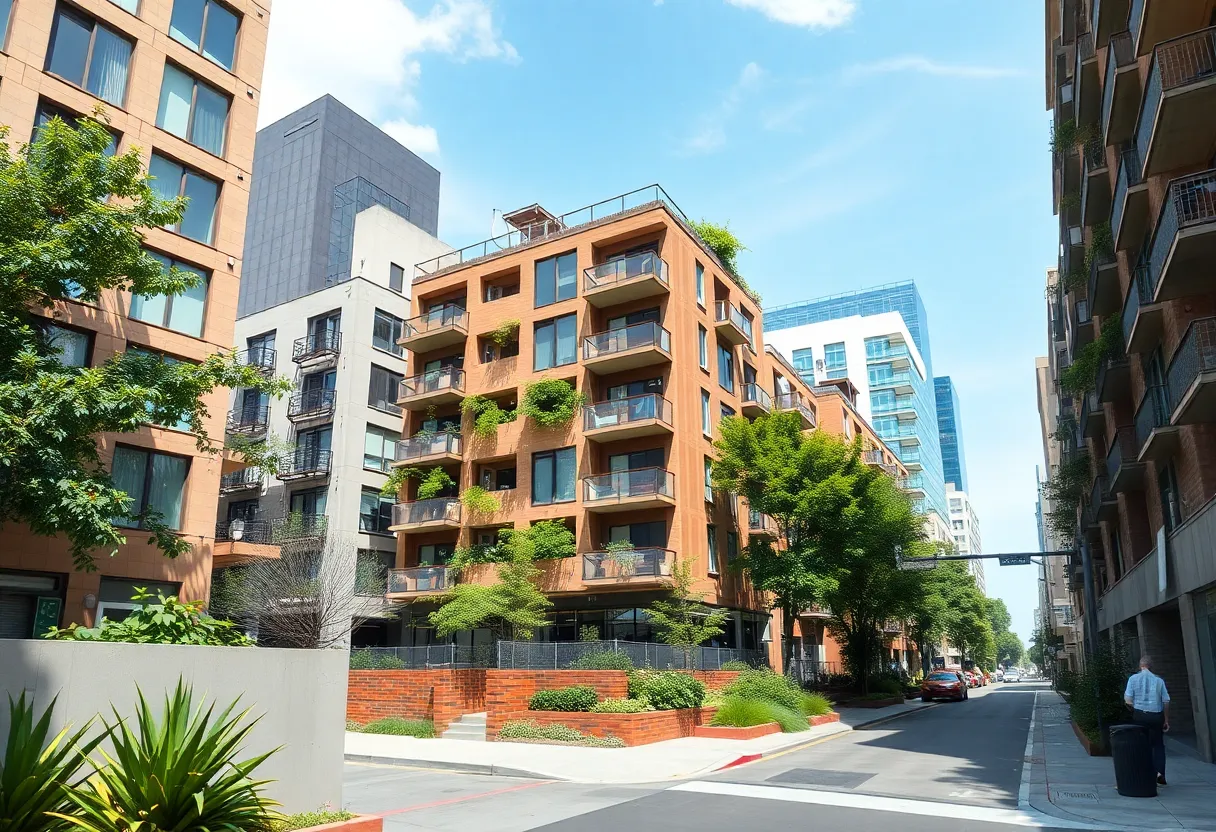California, September 28, 2025
News Summary
California lawmakers are facing setbacks in their attempts to impose stricter regulations on data centers, with only two out of four proposed bills currently awaiting the governor’s approval. The remaining bills aim to mandate water use disclosures and enhance communication with water suppliers but fall short of the original reforms. Critics voice concerns about the environmental impact of expanding data centers, especially amidst California’s ongoing drought and rising electricity demands. The diluted bills have stirred frustration among advocates who seek greater transparency regarding water and energy resource management.
California lawmakers’ aspirations for stricter regulations on data centers have stalled after nine months of legislative inactivity. Only two out of four proposed bills are on Governor Gavin Newsom’s desk, and these current bills have been significantly weakened compared to their original intentions.
The two bills that are currently under consideration are:
- Senate Bill 57: This legislation mandates water use disclosure by data center operators but allows the information to be less accessible to the public.
- Assembly Bill 93: This bill requires data centers to inform water suppliers of their estimated water consumption during business license applications or renewals. It also encourages the development of water use efficiency guidelines.
However, significant reforms initially proposed have not survived the legislative process. Two additional bills, which would have required data centers to disclose their power usage and incentivized cleaner energy practices, failed to progress in the Legislature altogether.
Data centers are becoming increasingly scrutinized as a pressing public policy issue. With their role in storing and transmitting content from platforms like TikTok and Amazon, concerns about environmental impact are rising. The demand for artificial intelligence (AI) technologies, particularly those akin to ChatGPT, has spurred a rapid increase in the establishment of new data centers, compounding existing issues.
The continued expansion of data centers raises critical questions regarding water usage, as the need to cool semiconductor components intensifies. This leads to heightened anxiety over the strain on water resources and the potential for increased electricity rates for California’s residential consumers. A reported 40% surge in hookup requests from Pacific Gas and Electric (PG&E) showcases the growing footprint of data centers in the region. To ease the application process for data centers, the California Public Utilities Commission streamlined the approval process as of July.
Despite initial support from the Utility Reform Network for Senate Bill 57, subsequent amendments to the bill watered down its impact, shifting its focus away from safeguarding energy customers from data center-related infrastructure costs. As a result, concerns about the legislation’s effectiveness have been echoed by environmental advocates. PG&E, which initially opposed the bill, has withdrawn its opposition following these changes.
Compounding the complexity of this issue is California’s ongoing drought. A Stanford study reveals that the state is a favored location for future data center projects, particularly in regions suffering from high water stress. Critics argue that the lack of transparency surrounding water usage prevents communities from fully understanding the local environmental impact these data centers pose.
The legislative proposals currently on the table have been criticized for being diluted in favor of data center operators. Public access to critical water consumption data is at risk, leading to further frustration among local advocates who seek accountability and clarity in the environmental implications of these massive facilities.
The challenges extend not just to water but also to energy resources. California’s electric grid is facing mounting pressures due to increasing data center energy demands, which could require power equivalent to that used by millions of homes by 2030. Local governments are starting to engage more actively in discussions pertaining to these projects to ensure transparency and equitable planning practices.
The expansion of data centers is not without contention. Issues surrounding water consumption, air quality, and overall electricity load raise potential public health concerns. Additionally, the use of diesel generators within data centers poses significant threats, contributing to greenhouse gas emissions. This has created a polarized environment between technology advocates and environmentalist groups as they clash over balancing infrastructure growth and adherence to climate goals.
Experts indicate the necessity for innovative solutions within the data center sector to adequately navigate the increasing demands for both power and resources in California’s evolving climate.
Frequently Asked Questions (FAQ)
What is the status of the data center regulation bills in California?
Only two out of four proposed data center bills are currently on Governor Gavin Newsom’s desk, and those have been significantly weakened.
What do the currently proposed bills entail?
Senate Bill 57 mandates water use disclosure by data center operators but allows the information to be less accessible to the public, while Assembly Bill 93 requires data centers to inform water suppliers of their estimated water consumption during business license applications or renewals and encourages the development of water use efficiency guidelines.
What concerns are associated with the rise of data centers?
Increased data centers lead to higher water usage to cool the components, which raises concerns over water reservoir stress and potentially higher electricity costs for residential customers.
Why is water usage by data centers a critical issue in California?
California is a drought-prone state, and the water usage by data centers has sparked significant concerns, particularly in regions experiencing high water stress.
How is the electric grid affected by data centers?
California’s grid faces challenges with growing data center energy demands, with projections indicating the need equivalent to power supply for millions of homes by 2030.
Key Features of California Data Center Regulations
| Feature | Current Status | Proposed Changes |
|---|---|---|
| Water Usage Disclosure | Senate Bill 57 mandates disclosure but limits public accessibility | Greater transparency was initially sought |
| Public Health Concerns | Heightened due to disputes over water and air quality | Legislation intended to address public health risks |
| Energy Demand Projections | Increased demand requiring power for millions of homes by 2030 | Initial proposals to safeguard energy customers diluted |
Deeper Dive: News & Info About This Topic
- Los Angeles Times: California Legislature Passes Two Watered-Down Bills
- Wikipedia: Data Center
- LAist: AI Supercomputers and Electricity Costs
- Google Search: California Data Centers
- Daily Journal: California’s Data Centers and Climate Cooling
- Encyclopedia Britannica: Water Supply
- Capital & Main: California AI Data Centers and Dirty Energy

Author: STAFF HERE HOLLYWOOD
The Hollywood Staff Writer represents the experienced team at HEREHollywood.com, your go-to source for actionable local news and information in Hollywood, Los Angeles County, and beyond. Specializing in "news you can use," we cover essential topics like product reviews for personal and business needs, local business directories, politics, real estate trends, neighborhood insights, and state news affecting the area—with deep expertise drawn from years of dedicated reporting and strong community input, including local press releases and business updates. We deliver top reporting on high-value events such as the Hollywood Bowl summer concerts, the Hollywood Christmas Parade, film premieres at TCL Chinese Theatre, and festivals at the Magic Castle. Our coverage extends to key organizations like the Hollywood Chamber of Commerce and Visit Hollywood, plus leading businesses in entertainment, dining, and tourism that define the local economy. As part of the broader HERE network, including HERELosAngeles.com, HEREBeverlyHills.com, HEREAnaheim.com, and HEREHuntingtonBeach.com, we provide comprehensive, credible insights into Southern California's dynamic landscape.





